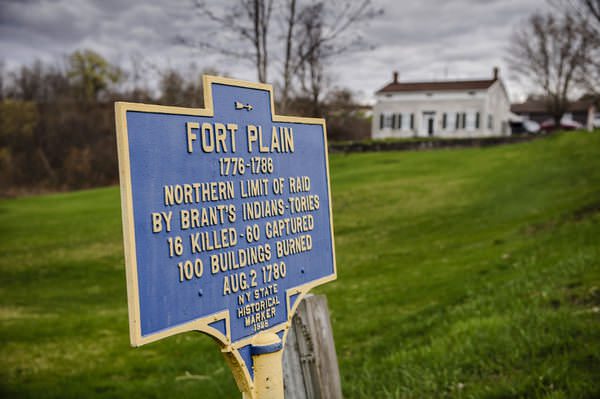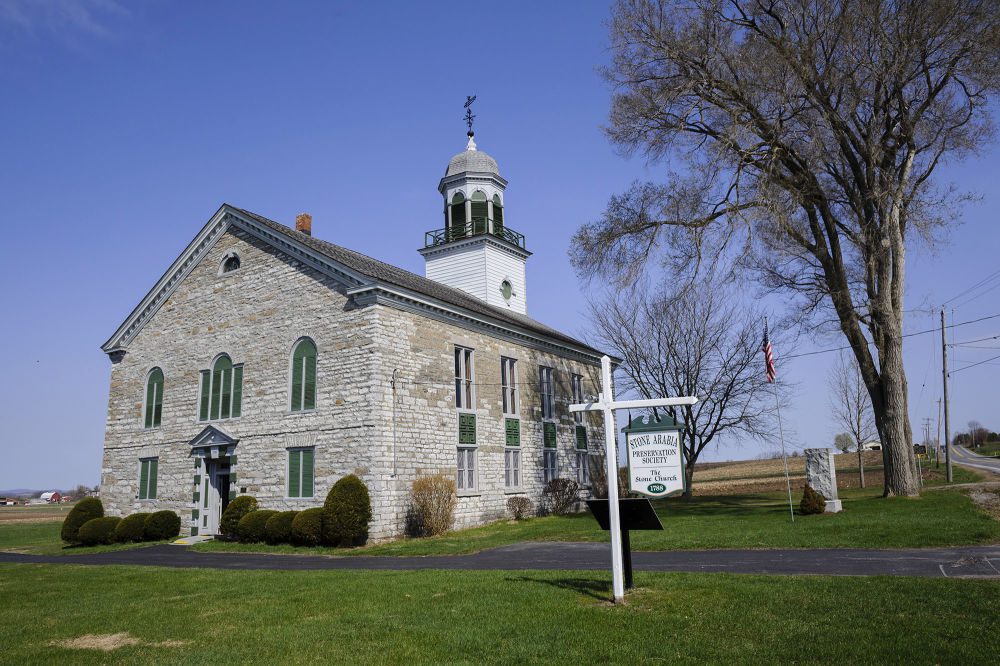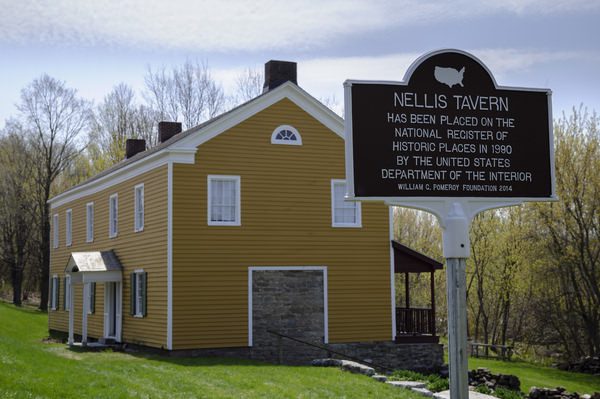America’s First Frontier: Where the Revolutionary War in the Mohawk Valley comes to life!
Follow our Mohawk Valley Path Through History (opens in a new tab) to eight historic sites (opens in a new tab) .
Your journey begins in Canajoharie (Exit 29 off the New York State Thruway) at the Van Alstyne Homestead (opens in a new tab) . According to family tradition, the original structure was built by Martin Van Alstyne as early as 1729. By 1765 son Goshen Van Alstyne had converted and expanded the house to a colonial tavern. The tavern became a frequent meeting place of the Tryon County Committee of Safety and is the place where Nicholas Herkimer received his commission as General of the Tryon County Militia.
 Continue your travels west on State Highway 5S to Fort Plain. The Fort Plain Museum & Historical Park (opens in a new tab) is the site of the original Fort Plain also known as Fort Rensselaer. The construction of Fort Plain began in the late fall of 1778 after the Cherry Valley Massacre convinced locals of the need for a haven in the event of enemy attack. By 1781 the fort had become an important Continental Army Depot for the western Mohawk Frontier and was inspected by General Washington in August of 1783.
Continue your travels west on State Highway 5S to Fort Plain. The Fort Plain Museum & Historical Park (opens in a new tab) is the site of the original Fort Plain also known as Fort Rensselaer. The construction of Fort Plain began in the late fall of 1778 after the Cherry Valley Massacre convinced locals of the need for a haven in the event of enemy attack. By 1781 the fort had become an important Continental Army Depot for the western Mohawk Frontier and was inspected by General Washington in August of 1783.
Also located in Fort Plain is the Isaac Paris House (opens in a new tab) . In 1777 Isaac Paris, Sr. was killed at the Battle if Oriskany making Isaac Paris, Jr. sole owner of the Paris holdings. Paris was an accomplished businessman who served as the business representative for Washington’s major general, the famed Baron de Steuben, a regular guest at the house and nearby Fort Plain.
 From Fort Plain, cross the Mohawk River to Nelliston following Hickory Hill Road to the historic farming community of Stone Arabia. Visit the Stone Arabia Dutch Church (opens in a new tab) burned by the British in October of 1780 during the Battle of Stone Arabia. It was rebuilt in 1788 and has remained unchanged since. The cemetery behind the church is the final resting place of Patriot leader Colonel John Brown of the Berkshire Massachusetts Militia killed in the battle on October 19th. Historic marker signs along Route 10 mark the locations of engagements and forts involved in the battle.
From Fort Plain, cross the Mohawk River to Nelliston following Hickory Hill Road to the historic farming community of Stone Arabia. Visit the Stone Arabia Dutch Church (opens in a new tab) burned by the British in October of 1780 during the Battle of Stone Arabia. It was rebuilt in 1788 and has remained unchanged since. The cemetery behind the church is the final resting place of Patriot leader Colonel John Brown of the Berkshire Massachusetts Militia killed in the battle on October 19th. Historic marker signs along Route 10 mark the locations of engagements and forts involved in the battle.
Continue westward, following the old Stone Arabia Road, to the Palatine Church (opens in a new tab) of “Drums Along the Mohawk” fame. The historic church was erected in 1770 and is the oldest church standing in Montgomery County. It was built by German Palatine settlers who originally migrated to America from the Palatine region of Germany in 1710.
Next is Fort Klock (opens in a new tab) , a fortified homestead built circa 1750 by Johannes Klock, a German Palatine who came to the area with the great Palatine migration. On October 19, 1780, the Battle of Klock’s Field was fought just west-northwest of the fort.
 Located less than a mile west of Fort Klock is the 1747 Nellis Tavern (opens in a new tab) , an historic inn and tavern. Built by Christian Nellis, Sr., as a farmhouse, was expanded to its present form about 1800 with the construction of the Mohawk Turnpike. The original timber-frame clapboard structure survived the French and Indian War and the American Revolution.
Located less than a mile west of Fort Klock is the 1747 Nellis Tavern (opens in a new tab) , an historic inn and tavern. Built by Christian Nellis, Sr., as a farmhouse, was expanded to its present form about 1800 with the construction of the Mohawk Turnpike. The original timber-frame clapboard structure survived the French and Indian War and the American Revolution.
St. Johnsville is also the home of the Margaret Reaney Memorial Library (opens in a new tab) which houses a collection of fine art, sculpture, and historically important memorabilia. Spanning many years, from pre-Revolutionary to present time, the exhibits reflect the rich cultural heritage of the Mohawk Valley.
Tour of Mohawk Country sites or visit for a special event. Take your time exploring the historic heritage of Montgomery County. Dine (opens in a new tab) , relax, spend the night (opens in a new tab) !